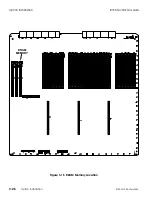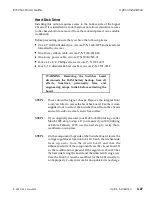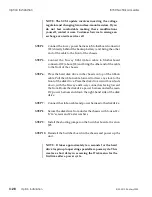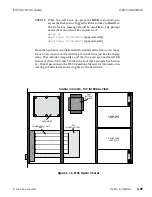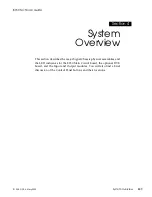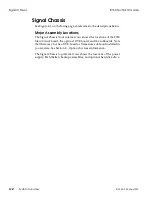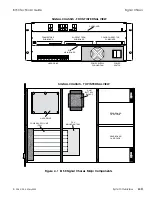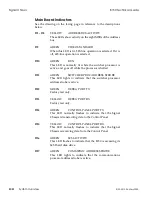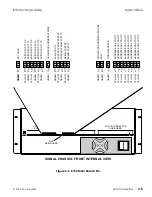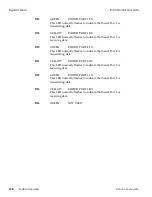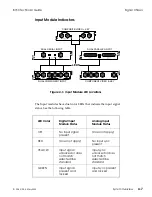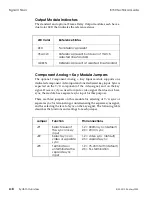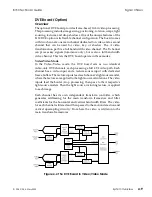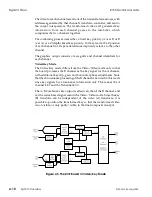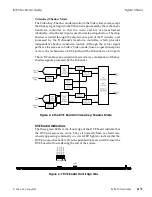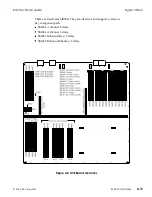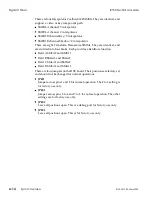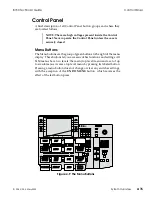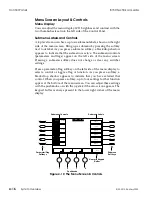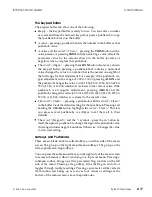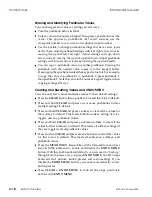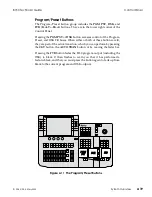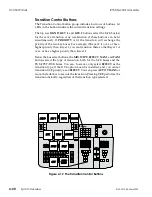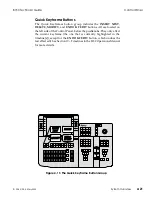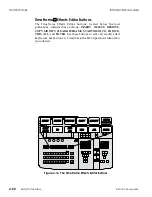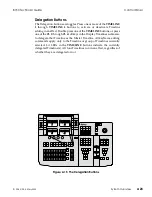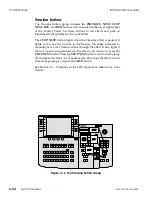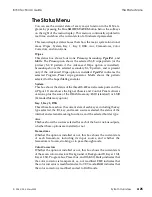
The video for each channel is read out of the transform framestores, with
addresses generated by that channel’s transform controller, and sent to
the output interpolators. The transformed video and generated key
information from each channel passes to the combiner, which
composites the two channels together.
The combining process uses either a fixed key priority (A over B or B
over A) or a Z (depth) based key priority. In Z key mode, the Z position
of each channel in 3D space determines its priority relative to the other
channel.
The graphics output consists of axis grids and channel identifiers for
each channel.
Video/Key Mode
The Video/Key mode differs from the Video/Video mode only in that
the board processes the B channel as the key signal for the A channel,
with additional key clip, gain, and horizontal phase adjustments. Note
that the chrominance processing of the B channel is not used in this mode
since key signals have luminance information only. This makes the A
channel 4:2:2 and the B channel 4:0:0.
The A/B Combiner’s key output is effectively that of the B channel, and
not the raster-based signal seen in the Video/Video mode. Since the key
(B) transform can be independent of the video (A) transform, it is
possible to position the transformed key so that the transformed video
is not visible, or only partly visible, in the final composited output.
Figure 4-5 The DVE Board in Video/Key Mode
Signal Chassis
8150 Technical Guide
4-10
System Overview
9100-0212-04 - May 2000
Summary of Contents for ASWR8150
Page 12: ...Table of Contents 8150 Technical Guide X Contents 9100 0212 04 May 2000...
Page 39: ......
Page 80: ...Control Panel Connector Detail 8150 Technical Guide 2 40 Installation 9100 0212 04 May 2000...
Page 109: ...Option Installation 8150 Technical Guide 3 30 Option Installation 9100 0212 04 May 2000...
Page 236: ...8150 Partial Parts List 8150 Technical Guide A 6 Appendix 9100 0212 04 May 2000...

